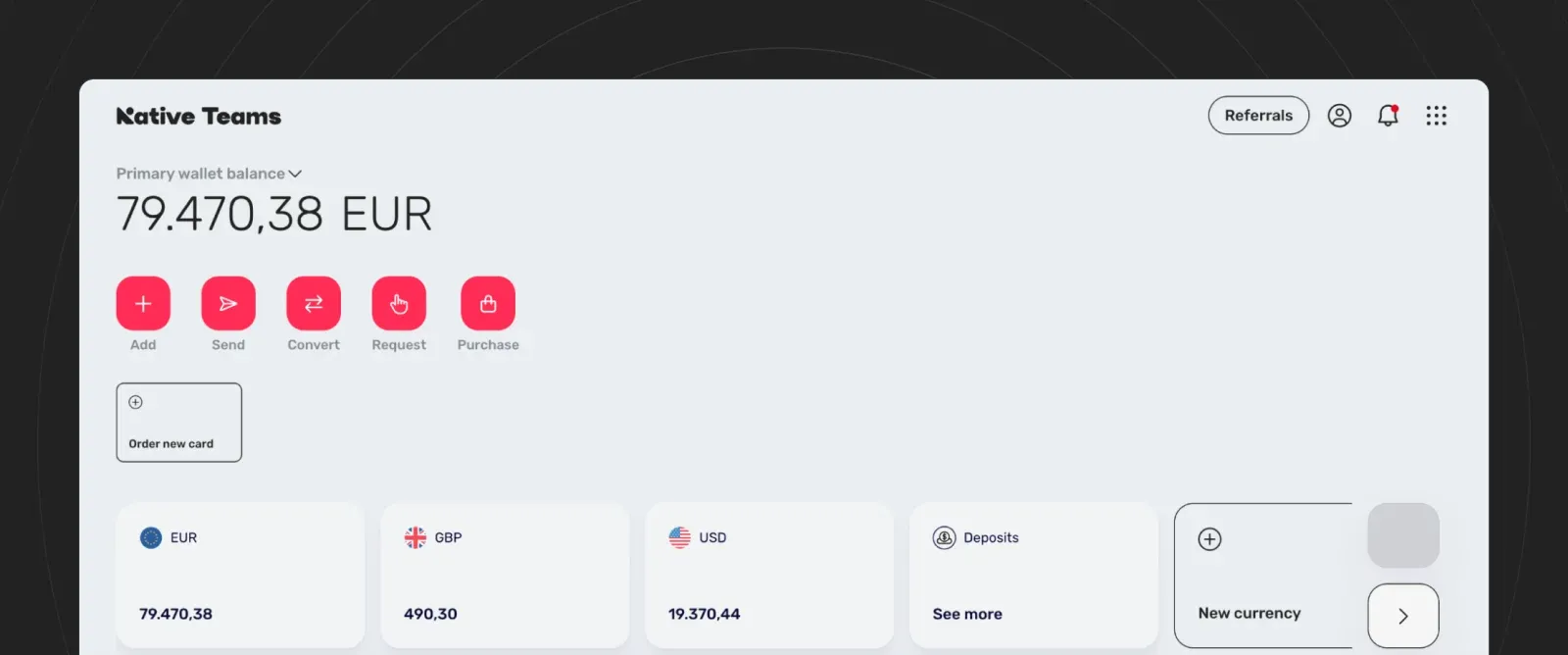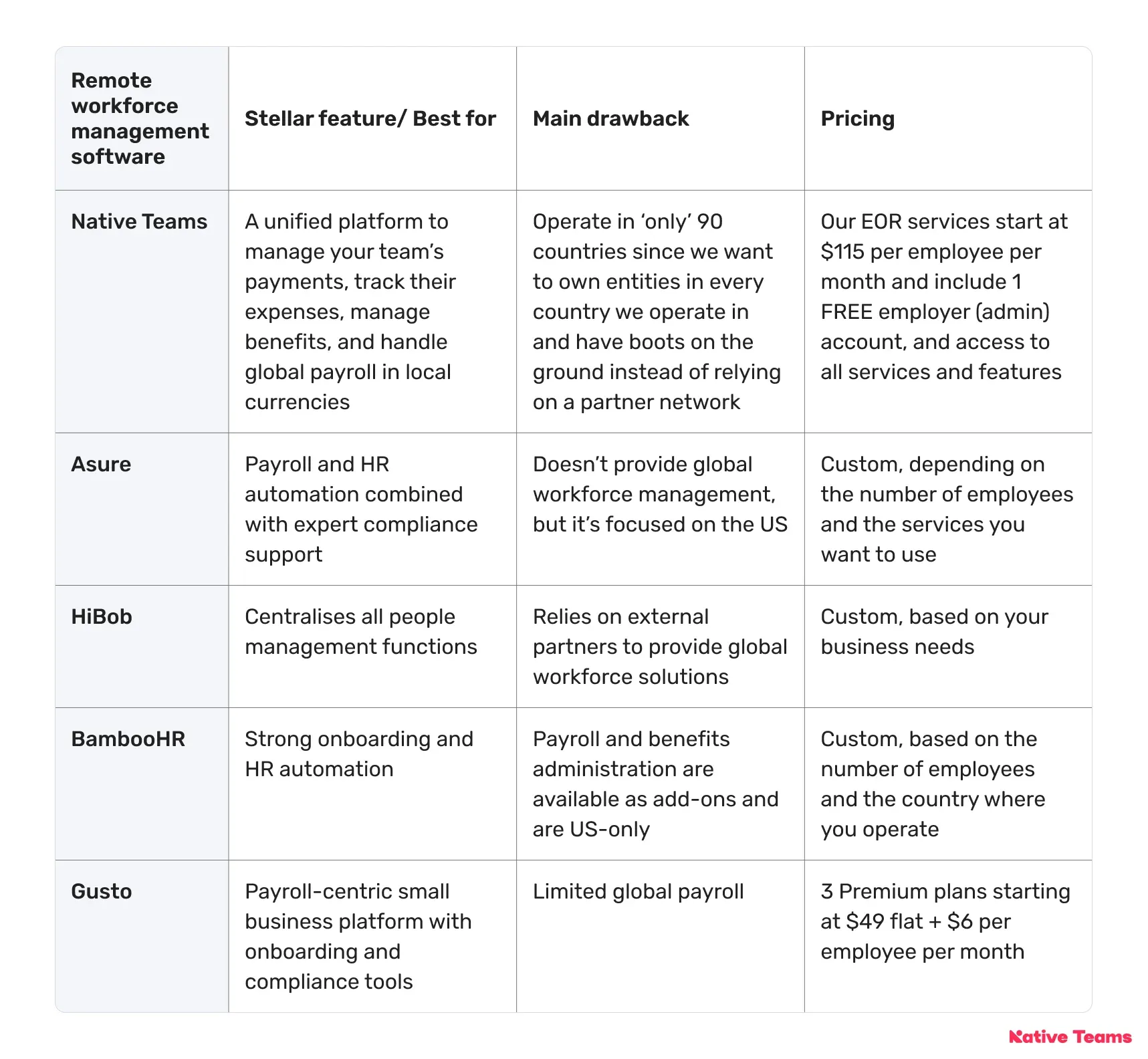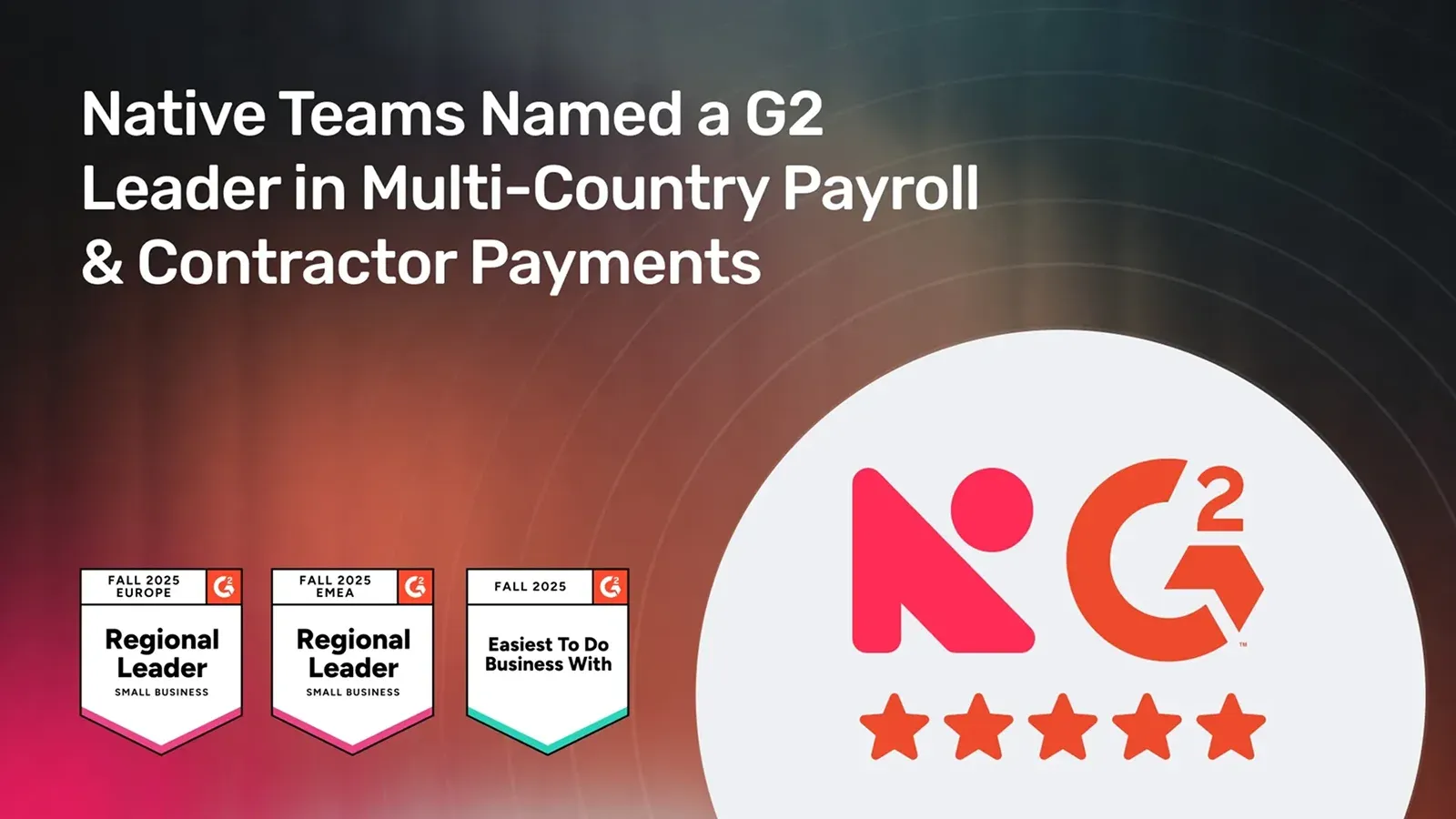Remote Workforce Management: Strategies & Tools 2026
How do you keep everyone aligned, engaged, and performing at their best when they’re miles apart?
A question that probably rushed through the head of anyone who’s ever had to manage a remote workforce.
Miscommunication, scattered payroll systems, and unclear policies only add to the chaos.
Nonetheless, with the right strategies and digital infrastructure, remote workforce management can become a smooth, scalable operation.
Read on to learn about 7 strategies to improve remote workforce management and create a people-first culture that thrives, no matter where employees work from.
What does remote workforce management involve?
Remote workforce management is the systems, processes, and strategies organisations use to effectively lead, support, and coordinate employees who work outside a traditional office, whether fully remote, hybrid, or distributed across different locations and time zones.
Effective remote workforce management covers several key areas:
1. HR operations and employee experience
- Managing recruitment, onboarding, and offboarding remotely.
- Maintaining engagement, inclusion, and well-being among remote employees.
- Tracking attendance, time-off, and performance records digitally.
2. Payroll, compliance and legal requirements
- Handling payroll across different states or countries, considering tax laws, benefits, and exchange rates.
- Ensuring compliance with labour regulations, data privacy laws, and employment contracts.
- Managing benefits and compensation structures that are fair and consistent across regions.
3. People and performance management
- Setting clear goals, KPIs, and accountability structures.
- Monitoring productivity and outcomes without micromanaging.
- Providing feedback, recognition, and growth opportunities remotely.
4. Communication and collaboration
- Establishing reliable channels (chat, video, project management tools).
- Creating a culture of transparency and trust.
- Ensuring cross-functional alignment despite physical distance.
5. Technology and infrastructure
- Implementing secure, cloud-based systems for collaboration and HR/payroll management.
- Ensuring data security and proper access controls.
- Leveraging analytics to track workforce trends and improve decision-making.
6. Culture and engagement
- Cultivating belonging and connection within a distributed team.
- Encouraging knowledge sharing, virtual team-building, and recognition programs.
- Aligning employees with the organisation’s mission and values, regardless of location.
7 effective strategies for remote workforce management you should know about
Here are our top picks of remote workforce management strategies, from optimising HR workflows to streamlining payroll and building a connected, productive team.
1. Opt for a unified payroll system
Managing payroll for remote employees has become increasingly complex due to the diverse tax laws, labour regulations, and employment requirements across different states, regions, and countries.
You must accurately track where employees work because payroll taxes and compliance obligations vary greatly depending on employee location.
How to successfully tackle this problem?
1.1. Consider digital payroll systems with automation
Modern cloud-based payroll systems automatically handle tax deductions, filings, and benefit contributions, all tailored to each employee’s exact work location.
Whether it’s adjusting for local pay laws, minimum wages, overtime rules, or statutory benefits, these platforms stay compliant so you don’t have to.
By automating the details, payroll teams can cut down on human error, speed up processing, and guarantee accurate, on-time payments across borders.
Many solutions also come packed with smart features, such as built-in tax filing tools, multi-currency capabilities, and self-service employee portals that bring transparency and convenience.
Platforms that support multi-currency payments with real-time exchange rates and low transaction fees make it easy to pay international remote employees accurately and on time.
💡 Native Teams’ Multi-Currency Virtual Wallet simplifies payroll by unifying payments across regions, reducing transaction fees and the need for multiple platforms.

1.2. Outsource to Employer of Record (EOR) services
Expanding your team across borders doesn’t have to mean drowning in legal paperwork. That’s where Employer of Record (EOR) services come in.
An EOR acts as the official employer for your remote talent in countries where your business doesn’t have a legal entity, taking care of everything from payroll and tax withholding to social security and labour law compliance.
With an EOR, companies can hire globally without the hassle of setting up local entities or navigating complex regulations.
It safeguards your organization from risks such as worker misclassification, permanent establishment issues, and compliance gaps.
💡 With legally owned entities in 90 countries, Native Teams enables you to hire, onboard, and pay global talent quickly, no legal entity required.
At the same time, we take care of compliance, payroll, and benefits, so you can expand and manage your teams with ease.
2. Integrate with HR and finance through a HRIS system
HRIS (Human Resource Information Systems) platforms bring all employee information into one unified system, covering:
- Personal data,
- Job roles,
- Compensation,
- Benefits,
- Tax details,
- Attendance, and
- Leave.
By unifying these records, you can eliminate discrepancies between siloed HR and payroll systems, ensuring accurate pay calculations, tax withholdings, and reporting across the board.
When integrated with payroll, HRIS platforms automate key processes, such as:
- Wage calculations,
- Benefit deductions,
- Overtime,
- Tax filings, and
- Statutory compliance across multiple jurisdictions.
From the moment a new hire joins, data flows automatically from recruitment systems to HRIS and payroll, creating accurate employee profiles without manual entry.
When an employee leaves, offboarding updates payroll and benefits to stop payments, process final settlements, and revoke access, keeping your organization fully compliant with regulations and internal policies.
By eliminating manual data entry across separate systems, HR, payroll, and finance teams save valuable time.
Automated workflows and synchronized approvals cut delays and reduce errors, making it easier to scale operations without adding extra overhead.
How can you unify employee data with Native Teams?
Our platform combines payroll, HR, payments, and finance tools in one place, so you don’t need to juggle multiple providers or platforms.
Moreover, you can manage multiple entities from one place and instantly activate payroll, compliance, and contract workflow for each country.
Thus, you can maintain a single, centralised dashboard for all your legal entities.
3. Support overall wellness
Focusing on wellness and mental health isn’t just good for people, but it’s also good for business too. Happy, healthy employees do their best work
Here are a few effective strategies to help your team feel supported, balanced, and motivated.

1. Lifestyle spending accounts (LSAs)
Give employees the power to choose what matters most to them. LSAs let remote team members personalize their benefits, whether that’s a wellness program, a home office upgrade, or something tailored to their lifestyle and location.
As a result, this flexibility boosts satisfaction and helps you get more value from their benefits budget.
💡 For example, Native Teams physical and virtual cards enable you to set spending limits, allocate funds, monitor usage, and generate expense reports, all in just a few clicks.
This way, you don’t have to worry about reimbursements and scattered payments, but manage every expense under one smart card.
2. Mental health and wellness support
Offering access to virtual therapy, counseling apps, stress management tools, and wellness stipends helps employees stay balanced and resilient.
Even more important is creating a culture that normalizes taking care of mental health, reducing burnout and keeping teams engaged.
3. Professional development opportunities
Providing online learning programs, workshops, stipends, and virtual conferences gives employees clear paths to develop their skills and advance their careers.
4. Home office and technology stipends
Offering allowances for ergonomic furniture, high-speed internet, or productivity tools helps remote employees stay focused, efficient, and supported in their daily work.
5. Flexible time off policies
Implementing flexible or unlimited PTO, including mental health days, shows trust and respect for employees’ diverse schedules and time zones, helping them maintain a healthy work-life balance.
6. Global benefits platforms
As teams expand internationally, consistency matters. Global benefits platforms make it easy to manage perks and compliance across multiple countries, ensuring every employee enjoys fair and inclusive benefits.
💡 With Native Teams, you can offer country-specific benefits, such as supplementary health insurance, lifestyle and wellbeing packages, coworking spaces, and more.
We help tailor these to fit both local requirements and your company culture.
Also, you can easily track salaries, sick days, and allowances from a centralised dashboard.
4. Establish clear communication
AI-powered tools and cloud platforms are great helpers to overcome remote work challenges such as time zone differences, information overload, and language barriers.

Tools like Slack AI and Microsoft Teams Copilot now handle the heavy lifting, summarizing meetings, generating action items, and transcribing conversations in real time.
With conversational search and instant language translation, global teams can easily find information and communicate across borders, making work more inclusive and efficient.
Virtual collaboration platforms such as Miro and Google Workspace bring distributed teams together in online workspaces.
From co-authoring documents to brainstorming on digital whiteboards, these tools help teams create, plan, and innovate faster.
At the same time, AI-powered video conferencing tools, such as Zoom, Teams, and Google Meet make meetings more productive.
Their built-in AI assistants can generate agendas, identify action points, and provide searchable transcriptions, while features like live captions, interactive whiteboards, and breakout rooms keep participants engaged and connected.
5. Keep your data protected
Security and compliance enhancement for remote workforce management revolves around implementing a Zero Trust Framework along with strong cybersecurity measures such as multi-factor authentication (MFA), endpoint security, and continuous employee training.
1. The Zero Trust framework replaces perimeter defenses with a ‘never trust, always verify’ mindset that authenticates every user and device.
It combines AI-driven monitoring, least-privilege access, and automated policy enforcement to protect data across hybrid and cloud environments.

2. Multi-Factor Authentication (MFA) strengthens defenses by verifying identities through multiple factors, while endpoint security tools safeguard employee devices with continuous threat detection and remote protection features.
Besides technology, you can also implement cybersecurity training to keep employees alert to phishing and social engineering risks.
Also, compliance management ensures adherence to regulations such as GDPR and HIPAA.
6. Define roles and employment types clearly
Clear role definitions and employment structures are the basis of effective remote workforce management.
Establishing this clarity ensures legal compliance and smoother operations, and also drives employee confidence, satisfaction, and productivity across distributed teams.
How clear role definition helps?
In remote teams, clarity is everything.
Defining roles clearly gives employees direction, eliminates confusion, and builds accountability by outlining exactly who’s responsible for what.
It also helps managers set fair, measurable goals and KPIs, making performance reviews more transparent and motivating.
With clear roles, communication flows more smoothly: everyone knows who to contact for support or decisions, reducing overlap and missteps.
In addition, organizations can allocate resources and talent more effectively, ensuring the right people are focused on the right work.
As a result you get a more aligned, efficient, and confident remote workforce.
Why is defining employment type so important for remote workforce management?
Clearly distinguishing between full-time, part-time, contract, and freelance workers is a must for staying compliant with varying labor laws and tax regulations around the world.
Proper classification helps you avoid costly legal risks tied to misclassification.
It also ensures that benefits, payroll, and compensation are aligned with each employment type, preventing confusion and keeping operations smooth.
Well-defined classifications enable drafting of accurate contracts, confidentiality agreements, and policy frameworks, protecting both the company and the employee.
Furthermore, being transparent about employment status builds trust and confidence among remote workers, helping them understand their rights, expectations, and opportunities for growth.
💡 Whether you're hiring full-time staff, part-time employees, contractors, or gig workers, Native Teams' easy-to-use templates help you draft contracts for the different employment types.

- Full-time contract: It covers job scope, salary, benefits, termination terms, and everything in between, customisable to meet the specific requirements of your country.
- Part-time contract: It includes details on work schedules, pay, expectations, benefits, and other relevant information, tailored to part-time employment.
- Contractor agreement: It outlines schedules, methods, and any associated terms, including invoicing requirements and payment details. It ensures transparent financial arrangements between all the parties involved.
Thus, you can hire the way your business needs, without second-guessing compliance or clarity.
7. Provide transparency
In remote settings, lack of visibility can lead to misunderstandings or feelings of isolation.
Transparent communication channels ensure everyone knows team priorities, deadlines, and responsibilities, reducing confusion and enabling smoother collaboration.
Open sharing of information about company strategy, career paths, and policies increases employee satisfaction and loyalty.
A great way to keep your employees in the loop is to enable employee self-service portals.
They empower remote workers by giving them direct access to payslips, tax documents, benefits, leave balances, and performance reviews anytime.
This transparency reduces administrative queries and builds confidence that their employment details are managed fairly.
Moreover, self-service tools allow employees to update personal information, request time off, or manage payroll and benefits preferences independently, helping them stay informed and engaged in their employment experience.
Many portals feature built-in messaging and feedback tools that keep communication open between employees, HR, and management.
These channels make it easy for team members to share concerns, ask questions, and get quick responses.
💡 With Native Teams’s solutions, your employees will receive payslips that showcase their earnings, deductions, and taxes, eliminating uncertainty and boosting employee statisfaction
Top tools for easier remote workforce management
Remote workforce management tools come in all shapes and sizes, tackling different aspects of running a distributed team.
Our focus was on the top HR, payroll, and employee experience platforms.

If you want to get a more detailed view of our 10 top picks, jump to our blog Top 10 Remote Workforce Management Software for 2026.
How to streamline remote workforce management with Native Teams?
By combining EOR and PEO services in 90 countries, Native Teams handles it all: from payroll and payments to compliance management and tax optimization, in one platform, giving you a smarter, simpler way to manage their global workforce.
Below is just a glimpse of what we can do for you:
✨ Offer competitive local and custom benefits to attract and retain top talent.
✨ Create fully compliant contracts for all types of employment to provide transparency and avoid employee confusion.
✨ Easily upload receipts, automate approvals, and track expenses in real time, making reimbursement faster and hassle-free.
✨ Manage employee time off efficiently while staying fully aligned with local labor regulations.
✨ Generate precise payroll calculations in seconds, always up-to-date with the latest local laws.
✨ Manage your workforce from a single platform, send payroll invites, adjust salaries, and track payments efficiently.

✨Get a clear, transparent breakdown of employment costs by country and instantly calculate gross-to-net earnings based on your location with Native Teams’ Payroll Calculator.
Curious to learn more?
Book a free demo today to see how you can build trust, engagement, and operational clarity for efficiently managing distributed teams.
Keep learning:
Device Management for Remote Teams: Sourcing, Storing, and Delivering
Cross-Cultural Collaboration in Remote Teams: Tips for Success
The Ultimate Guide to Gig Economy Payments & Workforce Management
